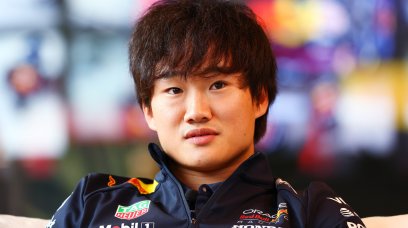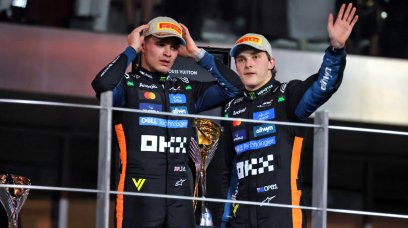Formula 1's upcoming engine freeze takes effect from the first race of the new season, meaning there's now less than two months of development time left for manufacturers to squeeze every last little bit of performance and reliability out of their power units. The freeze will halt the development of the engines until either 2025 or 2026, when the new engine formula is introduced – the exact date of the lifting of the freeze is yet to be confirmed. Alongside the upcoming freeze, the 2022 engines are being tweaked to use a new E10 fuel, raising the ethanol content to 10 percent from 5.75 percent in 2021. This change is resulting in a big headache for the manufacturers, which are working in tandem with the fuel suppliers to overcome the power loss of switching to the new fuel before the engines are locked in for the next few seasons. It's crucial that the fuel suppliers find the best solution, and fast, as development of the fluids used within the power unit will also cease once the engines are homologated. "As the part of the engine freeze that we decided on as a sport we, as a supplier of fuels and lubes, participated in some discussions," explained Tomek Young, Global Motorsports Technology Manager at Red Bull fuel supplier ExxonMobil, in an exclusive interview with RacingNews365.com . "Maybe the decision-making power wasn't ours, but we were consulted. We agreed on freezing the fuel and the engine oil as well."
Clawing back the horsepower drop
Young was reluctant to reveal just how much of a power drop has been discovered through the switch to the new E10 fuel, but explained their research and development has resulted in most of the deficit being overcome. "There were some efforts in years past to assess how fuels with higher content of bio-based materials performed," he said. "Some of the players in this sport developed so-called drop-in solution, ie. replace the fuel with something with higher bio-based content, [and] see what happens. And the performance debit that was observed in some of these tests was quite significant, maybe dozens of horsepower. "Then you go to a tailored fuel for 2022 and start your first experiments, and we saw significant losses. Clawing it back is really not a trivial exercise. "I can comment on the scale of the effort that we had. We have this logistics channel between Sakura in Japan [Honda's F1 engine headquarters], and our own research facility in Clinton, New Jersey. You're running all these samples and testing them – we were quite busy with those. "We're talking about many candidates that are evaluated with quite different formulations. You're using approaches within your design of experiments that are dissimilar, and try to land on a solution. "It wasn't an easy process and, of course, we were able to create something that's much better than this initial attempt of drop-in fuel."
An element of frustration over the engine freeze
While the engine freeze means the likes of ExxonMobil will supply Red Bull with the same formulation of fluids for the next couple of years, Young explained that stasis created an element of frustration for the company, but equally headroom for future research. Highlighting that their F1 research and development has direct trickle-down application at consumer level, Young said the freeze will have effects on that R&D. "For us, the technology piece is very important. It is not important to just say that we are a technology partner to show our logo on the car," he explained. "We are a technology-driven company, we develop these products in-house for both fuel and lube. And we do it not just for motorsports, we do it for commercial products as well. "We want control of performance [and] we want to squeeze every last bit of performance out of molecules that we use. We also produce a lot of molecules that are then turned into products. "Being able to develop motorsports technology and then extend it to products that are used by our customers is so critical."
ExxonMobil already looking to the future
It's in the new engine formula that Young said ExxonMobil are now turning their attention to, allowing R&D to continue to evaluate options for the future. "The interesting piece here is that even though 2025 and 2026 seems far, far away, let me tell you that behind the scenes, we are very busy with [the future]," he said. "Something to remember is that we have the engine oil and fuel in the car, and these two liquid products are extremely important for the car. The car is engineered to use certain fuel and lubes but we also have other products in the car. "So these areas of innovation [such as] greases, other hydraulic fluid, gear oil – they're still open to us. And we'll continue to innovate with those."
Most read






